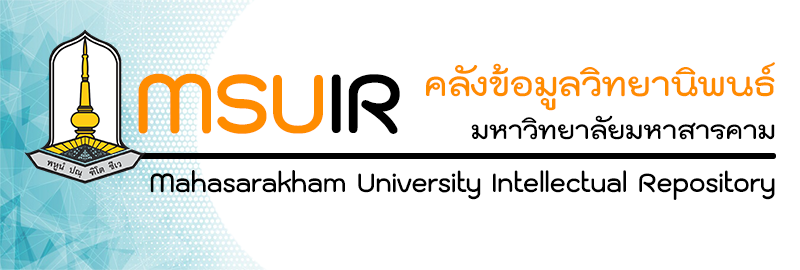Please use this identifier to cite or link to this item:
http://202.28.34.124/dspace/handle123456789/2721| Title: | Jiarong Tibetan Embroidery: Inheritance And Development Jiarong Tibetan Embroidery: Inheritance And Development |
| Authors: | Feng Yang Feng Yang Boonsom Yodmalee บุญสม ยอดมาลี Mahasarakham University Boonsom Yodmalee บุญสม ยอดมาลี boonsom.y@msu.ac.th boonsom.y@msu.ac.th |
| Keywords: | Jiarong Tibetan embroidery Characteristics Cultural ecology Structure and function Brand and models making Marketing and business Inheritance and development |
| Issue Date: | 24 |
| Publisher: | Mahasarakham University |
| Abstract: | The research objectives of this study are 1) to study the history of Jiarong Tibetan Embroidery; 2) to study the characteristics of Jiarong Tibetan Embroidery; 3) to study the development of Jiarong Tibetan Embroidery. This research uses qualitative research method to research and analyze relevant information and literature on Jiarong Tibetan Embroidery. In order to obtain first-hand information, researcher conducted the field work in Jiarong Tibetan area in Xiaojin County, Sichuan during March to June, 2023 using a basic survey, observations, interviews and focus-group discussion. In this study, 4 key Informants, 12 casual Informants, and 20 general Informants were purposively selected, They are local intangible cultural heritage inheritors, scholars, designers, government staff, sales staff.
Research results are as follows: 1) During the Han Dynasty, Han embroidery skills were introduced to the area. During the Tang Dynasty, the area gradually came under the jurisdiction of Tibet, the Jiarong Tibetans were formally formed, and Tibetan cultural elements were also incorporated into local embroidery. By the Qing Dynasty, Jiarong Tibetan Embroidery had matured and formed its own system, which has been passed down to this day. However, modernization has caused a huge impact on the inheritance of Jiarong Tibetan Embroidery. At the beginning of the 21st century, China began to pay attention to the protection of intangible cultural heritage, providing new opportunities for the inheritance of Jiarong Tibetan Embroidery. 2) Jiarong Tibetan Embroidery has strong ethnic characteristics and distinct regional characteristics. It is a traditional craft developed by the Jiarong Tibetan people for thousands of years to adapt to the special local geographical environment and climatic conditions and make full use of local resources. It is a comprehensive reflection of Jiarong Tibetan culture, life and beliefs. In recent years, the Chinese government has adopted a series of measures in conservation and achieved remarkable results, but there are still challenges in terms of marketization and commercial promotion. 3) In order to promote the characteristics and development of Jiarong Tibetan Embroidery, the researcher proposed the characteristics and development of Jiarong Tibetan Embroidery, by selecting materials, colors, shapes, weight, size method and models of making Jiarong Tibetan Embroidery. For development of Jiarong Tibetan Embroidery, the researcher has emphasized brand and models making using business, SWOT analysis and 4P marketing of Jiarong Tibetan Embroidery.
In conclusions, this study provides theoretical reference for the characteristics and development of Jiarong Tibetan Embroidery, and helps making up for the shortcomings of current Jiarong Tibetan Embroidery research at the theoretical level. At the same time, it provide suggestions and references for the local government in promoting the development of Jiarong Tibetan Embroidery industry, increasing residents' income, and enhancing cultural confidence. - |
| URI: | http://202.28.34.124/dspace/handle123456789/2721 |
| Appears in Collections: | Faculty of Fine - Applied Arts and Cultural Science |
Files in This Item:
| File | Description | Size | Format | |
|---|---|---|---|---|
| 64012461004.pdf | 10.48 MB | Adobe PDF | View/Open |
Items in DSpace are protected by copyright, with all rights reserved, unless otherwise indicated.

